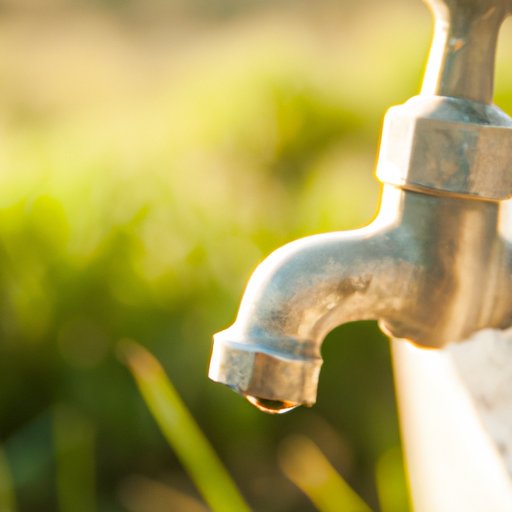
Introduction
Water is essential to human life, agriculture, and industry. However, with increasing population growth, urbanization, and climate change, water resources are becoming scarce. Water stress, a condition where the demand for water exceeds the available resources, is becoming a critical issue in many regions of the world. In this article, we will explore the causes, consequences, and solutions to water stress, including ways to measure and manage it effectively.
A Beginner’s Guide to Understanding Water Stress
Water stress occurs when the demand for water exceeds the available resources, leading to a scarcity of water for basic human needs, agriculture, and industry. It is a growing problem worldwide, affecting both developed and developing countries. According to the United Nations, over 2 billion people, or 25% of the world’s population, already face water shortages.
Exploring the Causes and Consequences of Water Stress
Water stress is caused by various factors, including population growth, overconsumption, pollution, and climate change. The consequences of water stress are significant on multiple levels, including environmental, social, and economic effects. Reduced water availability can lead to crop failures, widespread hunger, and poor public health outcomes. Water scarcity can also exacerbate social conflicts and threaten regional stability.
The Future of Water Stress
Water stress is projected to increase in many regions worldwide, particularly in developing countries. However, there are several potential solutions to this problem, including technological innovations, policy reforms, and changing consumption patterns. Governments and individuals can play a crucial role in managing water stress by adopting sustainable water management practices, investing in water infrastructure, and promoting water conservation measures.
How to Measure and Manage Water Stress
Measuring water stress requires taking into account factors such as water availability, population growth, and consumption patterns. Some tools used for measuring water stress include the Water Poverty Index, the Water Stress Index, and the Ecological and Human Health Risk Assessment. Effective management of water resources requires regular monitoring, conservation strategies, and sound governance practices.
Groundwater Depletion and Its Implications on Water Stress
Groundwater depletion, caused by over-extraction, is a significant contributor to water stress. This process has significant environmental impacts, including land subsidence, saltwater intrusion, and irreversible damage to ecosystems. To address the issue of groundwater depletion, it is essential to implement holistic water management strategies that focus on aquifer replenishment, reducing water demand, and using alternative water sources.
Water Stress and Climate Change
Climate change is expected to exacerbate water stress in many regions of the world, leading to more frequent and severe droughts, floods, and other extreme weather events. Adaptation measures, such as water pricing reforms, green technologies, and infrastructure investments, can help reduce the risks associated with climate change and water stress. However, more significant efforts are needed to mitigate carbon emissions and prevent further warming of the planet.
The Human Costs of Water Stress
Water stress has significant human costs, affecting the most vulnerable populations, including women, children, and the poor. According to the World Health Organization, over 790 million people lack access to safe drinking water, leading to numerous health problems, including diarrhoea and other waterborne diseases. Effective water management strategies must prioritize social justice, ensuring that everyone has access to clean and adequate water resources.
Conclusion
Water stress is a growing problem worldwide and is expected to worsen in many regions. However, effective management of water resources, including policy reform, technological innovations, and conservation strategies, can help mitigate water stress and ensure a sustainable future for all. It is vital to prioritize social justice and consider the human costs of water stress when making decisions and implementing solutions. By working together, we can ensure that water resources are used responsibly and equitably for generations to come.





